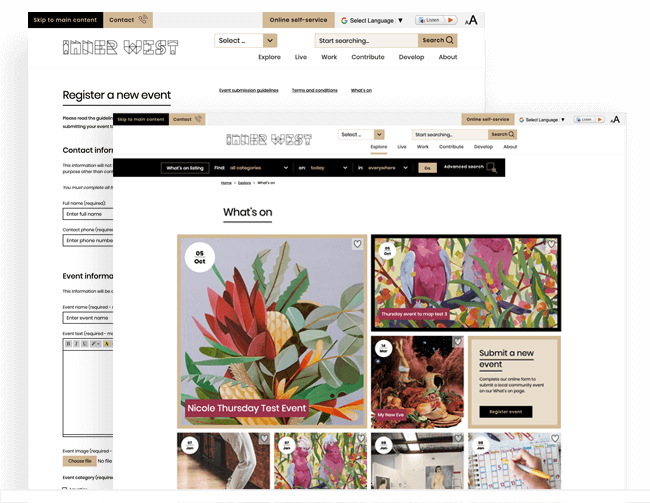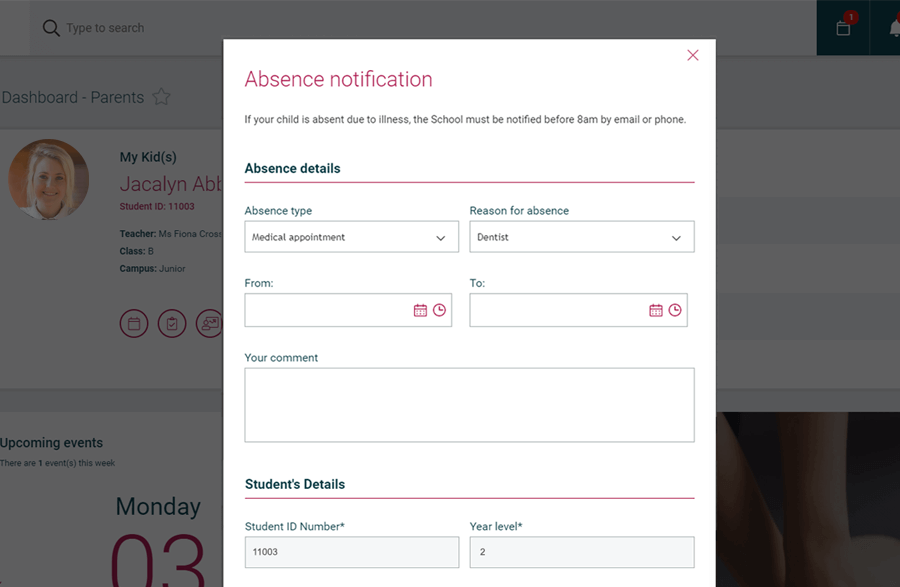Your company intranet forms the very foundation of your staff's digital workplace, providing access to the tools and applications they need to get their jobs done. Even enabling organisations to consolidate systems and reduce costs.
There are several intranet best practices you need to consider.
With the right company intranet features that prioritise user experience, you will be able to facilitate better collaboration and productivity within your organisation. Without them, the Intranet can become an active hindrance to getting work done.
For those who want to improve upon their company intranet or in the market to choose a new intranet software, here's a list of the ten must have features that employees love.
Want to build an intranet that actually helps your staff and improves internal processes? Click to download the free guide.
1. Document Management
Slide shows, spreadsheets, and text documents -- all of them need to be shared among employees, compiled, and consolidated. The better your document management is, the easier it will be for your employees to find the information that they need.
A good document management system creates an organisational infrastructure, while also ensuring that documents are kept secure. With the right document management features, employees can collaborate on the same documents without the fear of losing data.
The advantages of digital transformation in the context of document management systems include:
- Document and article properties. Add a start date and expiry date to documents, which are published on a specific date and are no longer visible once the expiry date is reached.
- Add review and expiry dates. Notify users when a document is created, updated, needs to be reviewed or expires.
- Version control: Restore documents and articles to any previously saved version, as well as compare previous versions and choose one to publish.
- Tag with taxonomy: Create tags to group information, then display content with a specific tag. For example, H&R policies can be displayed in both the policies section and the H&R department section on your intranet simply by tagging a document with the right taxonomy.
- Set up security groups and permissions. Keep confidential information secure by adding permissions and access for a select group of users.
- Access advanced enterprise search. Configure search for all documents or only documents in specific folders for added security.

2. Forms & Workflows
Forms and workflows are powerful tools to help automate processes and save staff from manual, low value tasks. Visual workflows and drag-and-drop forms are used for everything from capturing data for annual leave requests and expense forms, to enabling staff to register for events and training. Forms can be used to replace and augment spreadsheets, for the better organisation of information that's critical to the business.
Data is captured via an online form and stored in secure databases and systems, removing the need to manually type up answers. Forms can be personalised to show or hide fields for staff in specific groups such as departments or locations. Beyond capturing data for administrative tasks, forms can also be used to publish content.
With Elcom for example, you can quickly design a form that will automatically publish standardised articles based on the form’s values end users have submitted on submission, with support for approval workflow if needed.
Meanwhile, workflows are used to create coordinated sequences of actions and milestones that employees can follow on a timeline. A workflow makes it easier for companies to coordinate both individuals and teams, while also keeping a project on track to be delivered in time.
3. Events Management
The ability to seamlessly manage and announce events within an Intranet is a valuable tool for companies looking to use technology to improve employee experience. A good company Intranet service makes it easy to both create and manage events. Events aid in improving company culture and standardising training throughout the organisation.
With a solid event manager, companies are able to push updates to employees as desired and even track which employees attend which events. Events managers can also be used as a logging system to display events as they occur to employees.

4. Dynamic Widgets
Dynamic widgets can be used to automatically customise content pages and dashboards. Widgets each provide a specific function, such as displaying a company event calendar, news, blogs and other resources feeds, lists of documents, gallery of images and libraries of assets.
Publishers can create and maintain one widget and use it to display information across several articles simply by inserting a tag within either an article or template.
Dynamic widgets are able to be moved, depending on an employee or administrator's focuses. Employees may work differently and sometimes their focuses may change. The ability to easily tailor their desktop to what is currently going on can help.
5. Team Workspaces
Team workspaces make it easier for employees to work together with others on shared projects and interests, both formal and informal. These can be created for work related projects, or simply as an area to socialise with others on shared hobbies and social activities outside of work tasks. Employees can easily participate in conversations and share documents around a topic or project.
Workspaces allow teams to move work out of email threads and into centralised collaborative areas which are more efficient, searchable, and can be as open or private as needed.
Users with the right permissions can create a Team Workspace for project specific communication and content. A good team workspace will allow you to add a document list, calendar, news stream, RSS feeds or any module to build a specific collaborative environment.

6. Social Tools
Employees today value social tools as a way to connect with their colleagues and even customers. By allowing for social intranet tools, companies can direct the focus of their employees without sacrificing the utility of social media.
Provide your employees with access to social networking tools such as personalised social profiles, activity streams and notifications, social Q&A, microblogging and blogging, and even online project spaces dedicated to specific hobbies and interests to help them connect on a personal level.
There are many offices now that have employees who work primarily remotely. Social tools can aid in connecting employees and making them feel more involved with the company.
7. Mobile Responsive Design
Today's employees work not just on their own personal computers but also through mobile devices. Both smartphones and tablets are now heavily used for everything from casually sending emails to working on important documentation.
An Intranet with built-in mobile responsive design isn't just easier to use -- it's also designed to be more secure when used with mobile devices. For more information, read our free mobile web best practices guide,
8. Developer API/Third Party Integration
A developer API also makes it possible for the company to develop their own custom software to interface with the Intranet. Through an API, virtually any feature can be added that is not already available.
Moreover, a good intranet will offer a robust solution that integrates with existing business systems and platforms including enterprise resource planning and customer relationship management systems. This pulls through summary information from integrated systems and allows your staff to view on your intranet. This in effect, turns your intranet into a 'one-stop shop' supporting their information and communication needs, rather than making them visit several different systems.
In specific instances, data can also be pushed back into third party system.
For example, a staff intranet built for a school may integrate with a school management system. The intranet will pull in a medical form from this system that is pre-populated with data. They can then update this data in the intranet. A notification will be sent to the relevant staff member to approve the change, before it is automatically updated in the school management system.

Tip: Staff may want to visit the third party system to find more information. To make this experience seamless for them, consider implementing single sign-on capabilities. This means, they can click through to other systems from the intranet, without having to input their login credentials again.
9. Personalised Content
Personalisation is a key component of the intranet design principles we advocate for here at Elcom.
Different employees have different focuses. Personalised intranet experiences allow employees to drill down to their own priorities. Employees can set their own shortcuts to the files and features that they use the most -- and they can keep their contacts and content well-organised on their own.
Personalised content also extends to supervisors, staff members, and specialised team members, as they can acquire information and access that others would not need.
10. Intuitive Search
As your company's intranet grows, it can become increasingly more difficult for employees to drill down to the information that they need. An intuitive, contextual search can be used to search the documents that are most applicable and relevant to each employee. Through this, employees can find important information much faster.
What does this include? Administrators should be able to govern old content, as well as restrict certain documents or pages so that it doesn’t appear in results. It should also have features like search refinements that makes sense to your organisation, a user-friendly search results page and intelligent search that brings up searches when there are misspellings.
Next Steps
So what happens when your employees don't love the company Intranet?
Not only will you see a decrease in productivity, but you'll also see a lot of "self serve IT" -- leading to security issues and system slow downs.
The best thing to do is make sure that your company's Intranet fulfils the needs of your staff so you can start reaping the rewards of an intranet that delivers real business value and ROI.
If your intranet is lacking in features and functionality, consider implementing an intranet-in-a-box such as the Elcom Packaged Solution that comes pre-built with the features mentioned above.
To learn more, you can download our eBook: How to Successfully Plan, Deploy & Launch an Intranet.
